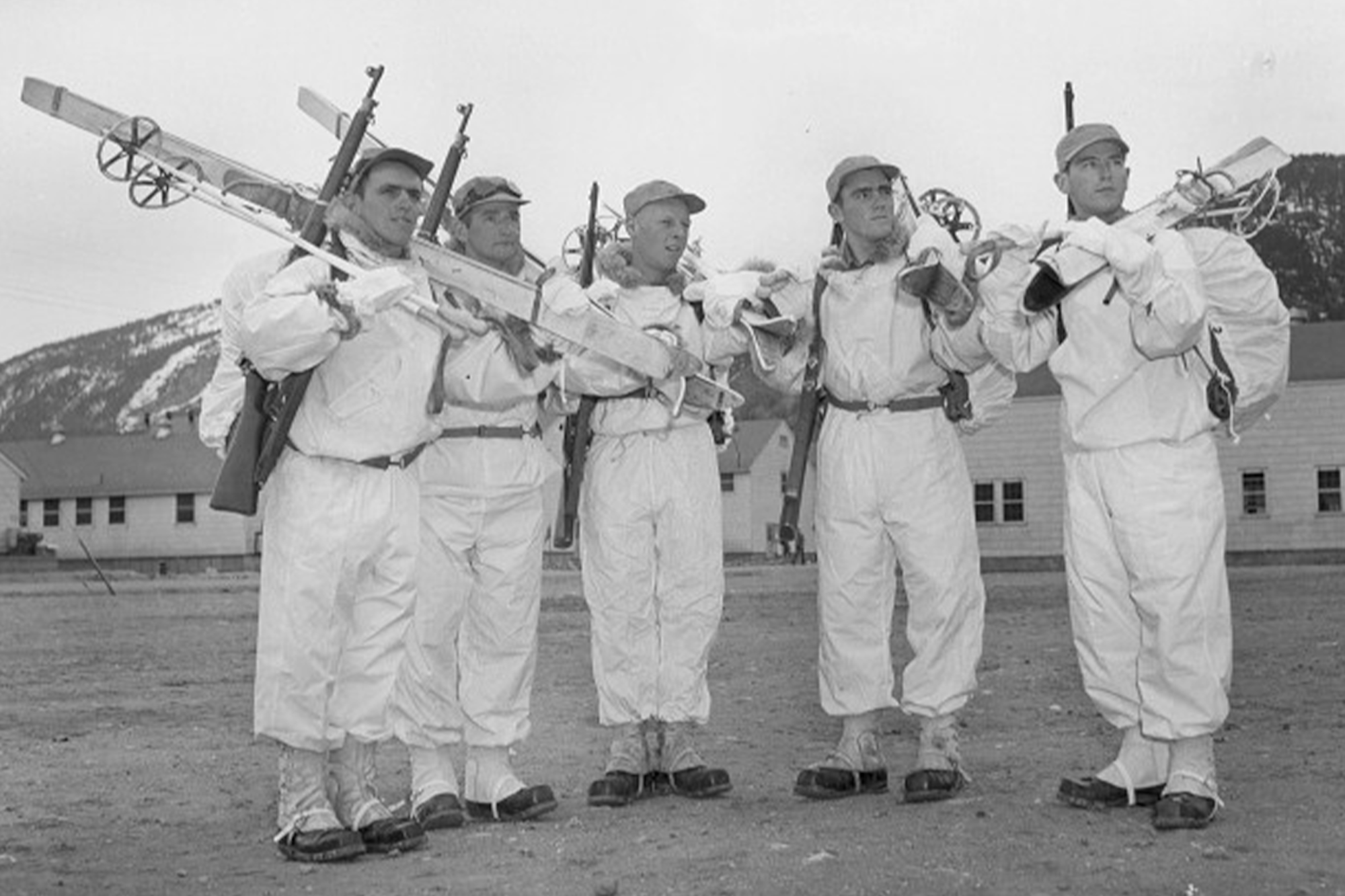Featured Image: Courtesy of the United States Army
More than 80 years after its creation, the history of the 10th Mountain Division remains as relevant as ever. While it may not be evident on the surface, the group helped to shape the modern North American ski industry as we know it. In fact, the roots of this storied division are strongly intertwined with the National Ski Patrol (NSP) organization. This Veterans Day, FREESKIER spoke with National Ski Patrol CEO Stephanie Cox and 10th Mountain Division veteran Staff sergeant Mohammad Richard Nadeem to better understand the deep tie between these two historic service groups.
Created out of necessity during the pinnacle of World War II, the 10th Mountain Division was tasked with mastering mountain combat to provide support in the European theatre. It was to be the Army’s first-ever mountain-specific unit. The goal was to break through strongly held Axis positions in the rugged mountain terrain found in Austria and Italy. Charles Minot “Minnie” Dole, who had founded the National Ski Patrol in 1938, was tasked with “gathering information about the possibility of a U.S. mountain unit,” according to the U.S. Army.
Dole approached this position with true intensity, realizing the dire need for such a unit. He brought in civilian volunteers who were experienced in rock climbing, skiing and mountaineering. Cox mentioned the NSP is immensely proud of this moment to this day, stating, “It’s a part of our legacy of service, and it’s something we don’t take lightly. We were the first civilian organization ever given the responsibility of assisting the [U.S. military] with recruitment and training.” She added that, “by 1944 [NSP] had recruited and trained almost 8,000 Army patrollers, and this was fundamental to the success of the war.”
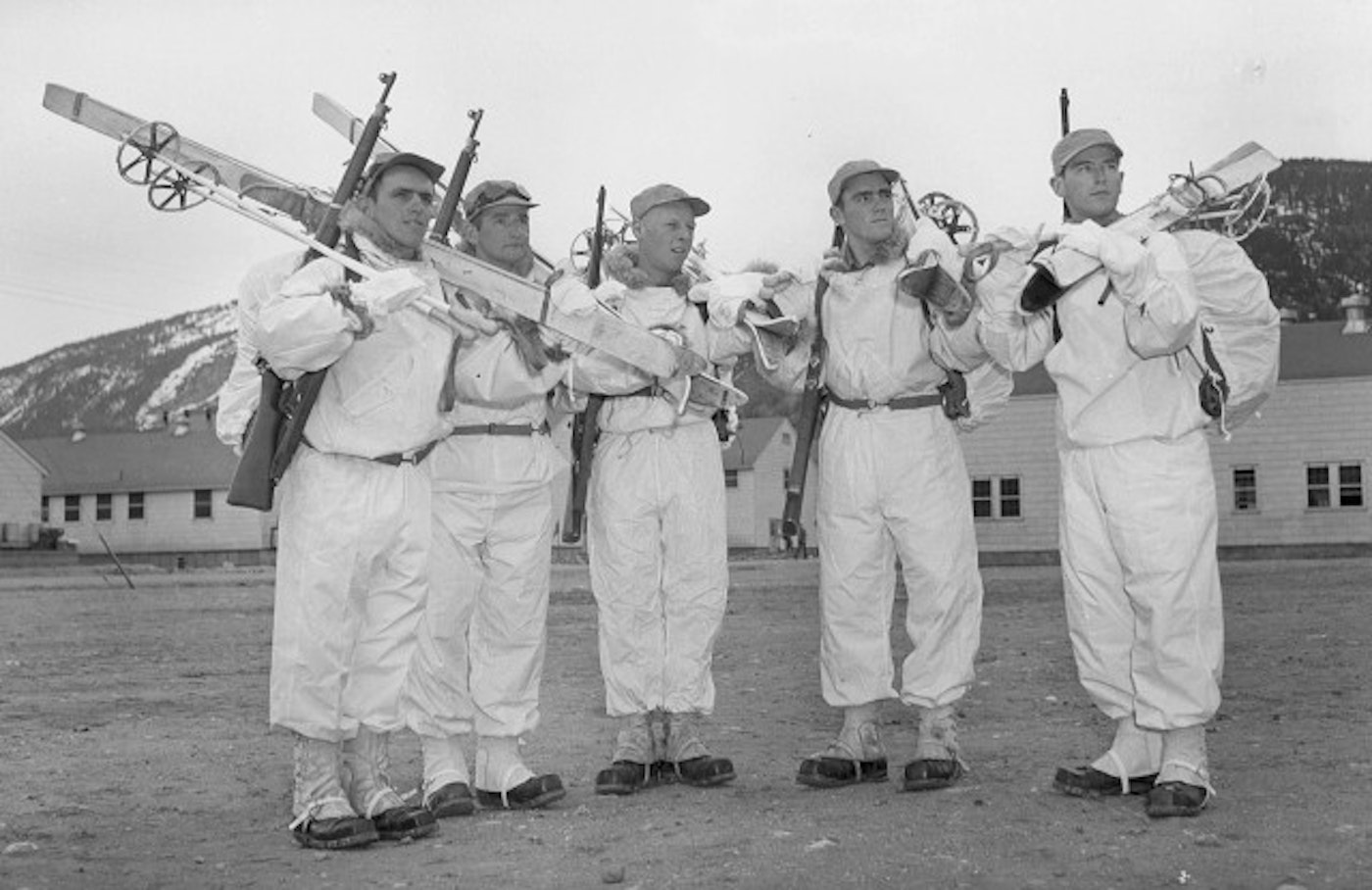
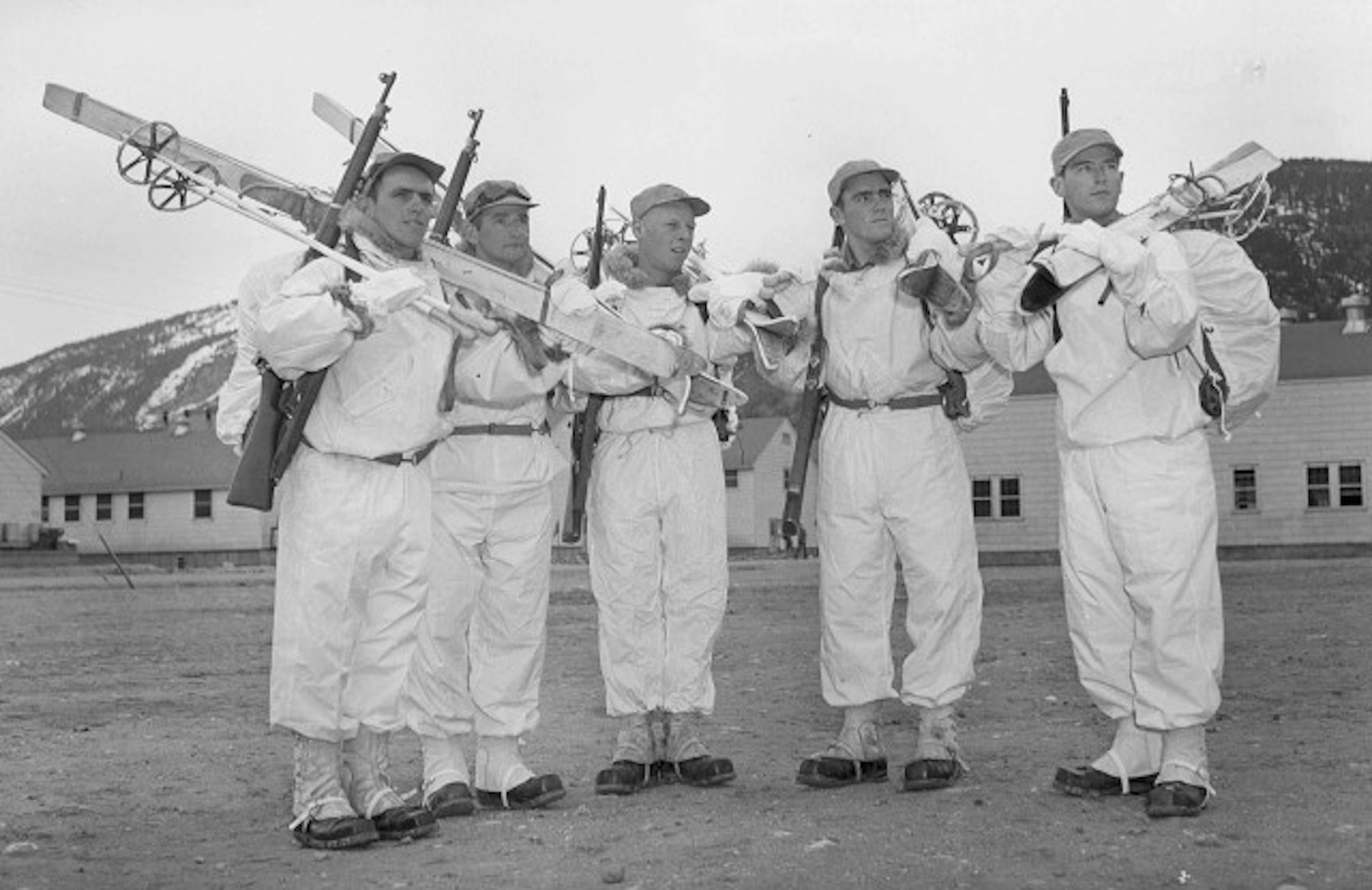
After being recruited and vetted by the National Ski Patrol, members of the 10th Light Infantry Division (Alpine) train at Camp Hale, Colorado | Photo: U.S. Army
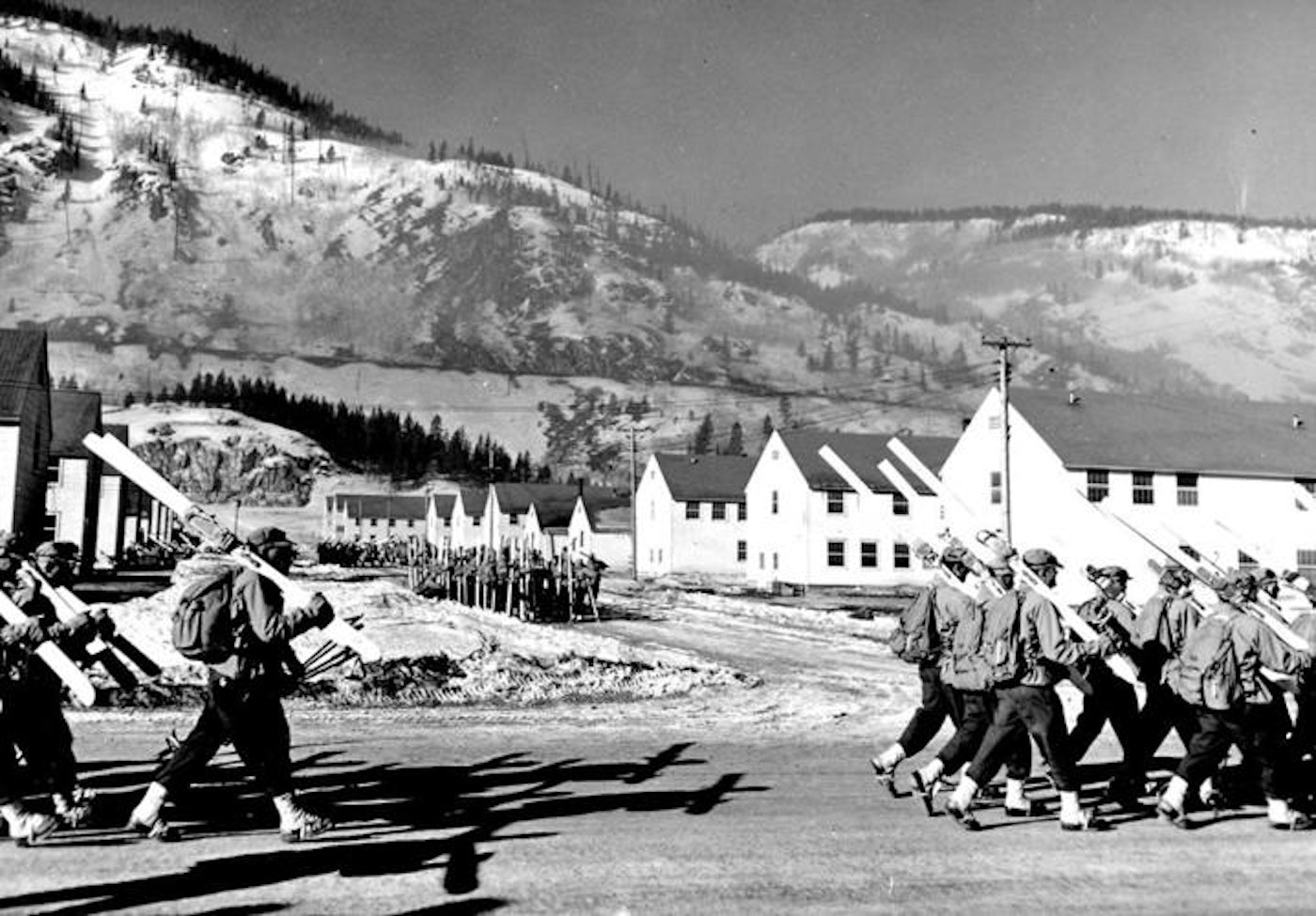
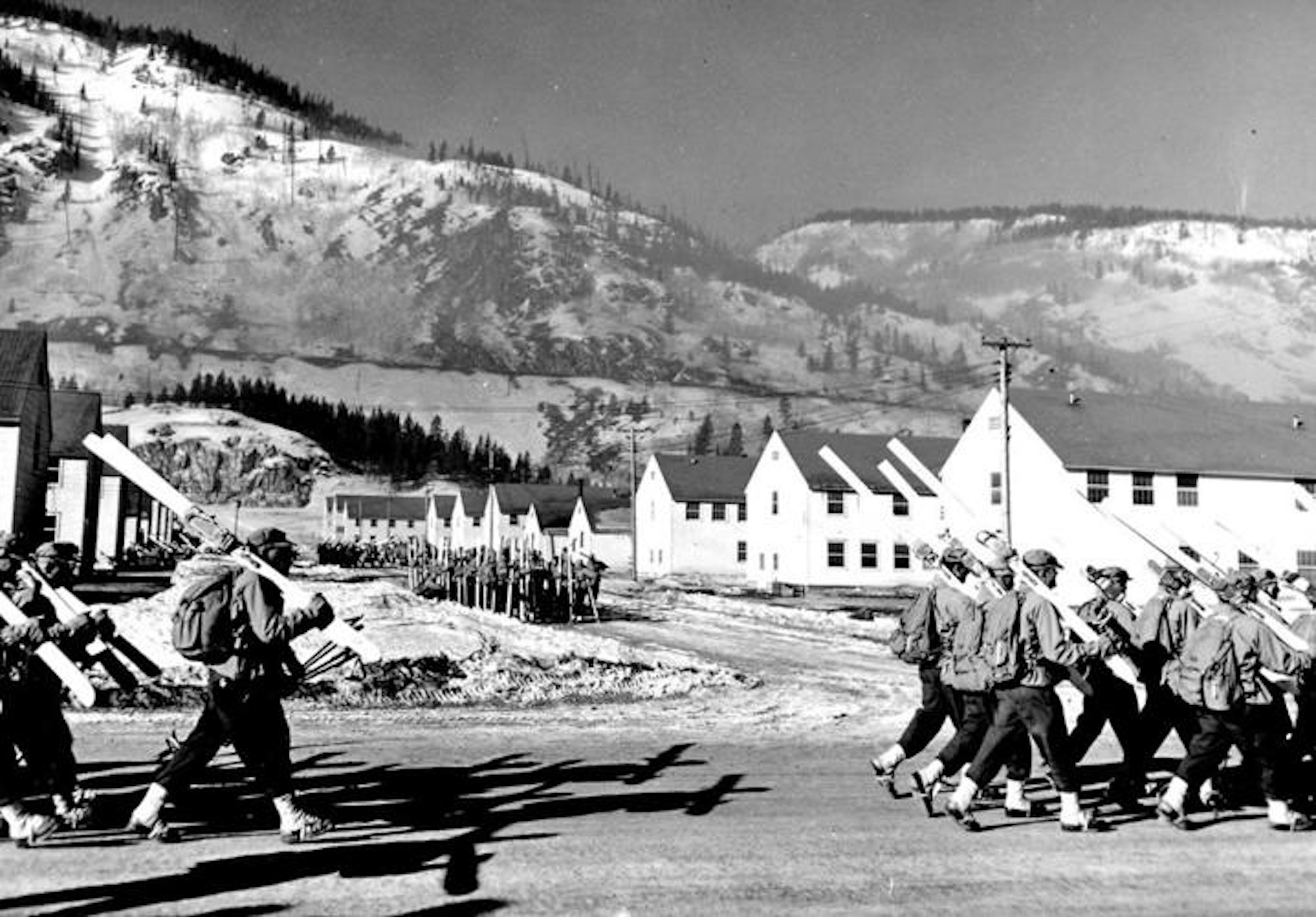
Camp Hale, Colorado | Photo: U.S. Army
Originally dubbed the 10th Light Infantry Division (Alpine), the group commenced training in 1943 at Camp Hale, Colorado, after moving operations from their original training grounds at Mount Rainier, Washington. Many soldiers had hardly stepped foot on skis before. This made education in ski mountaineering, winter combat and mountain survival skills all the more challenging and crucial.
After extensive training, the division was deployed to the Italian campaign under the command of Maj. Gen. George P. Hays. They fought tirelessly for nearly six months straight, paving the way for the liberation of Northern Italy. While many Allied troops were moved to France during that time, the 10th Mountain Division stayed in Italy and accomplished perilous missions in the high alpine, removing German and Italian strongholds thought to be untouchable.
Perhaps the most notable of their victories was that at Riva Ridge when the unit utilized their mountaineering and climbing training to ascend a 2,000-foot cliff wall in the dead of night and stage a surprise attack on the embedded Axis forces. It allowed for additional attacks on neighboring mountains, none of which would have been possible without this initial act of heroism. It is in no way a stretch to say that the 10th Mountain Division was a necessary component of Allied success in Italy and across Southwestern Europe.
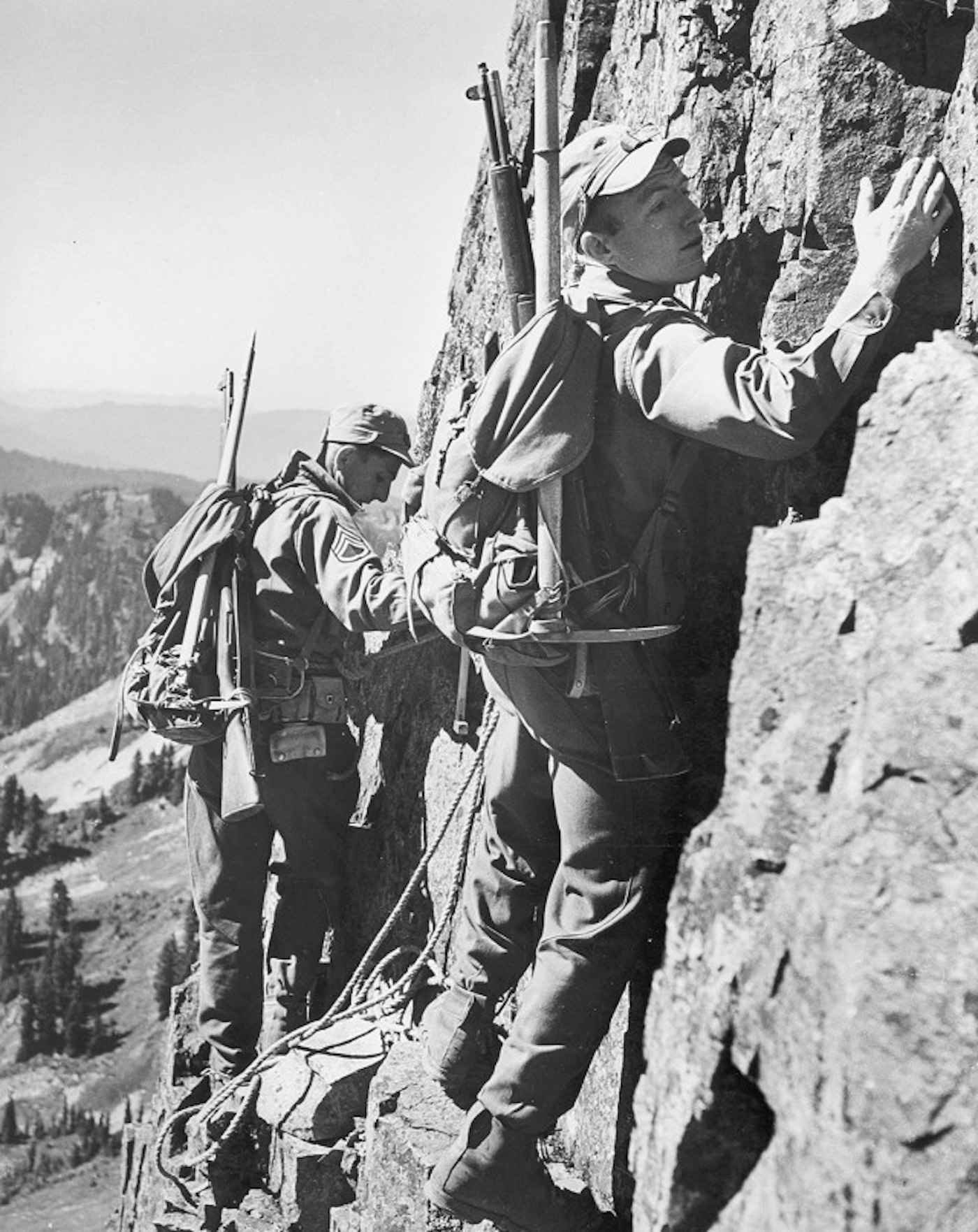
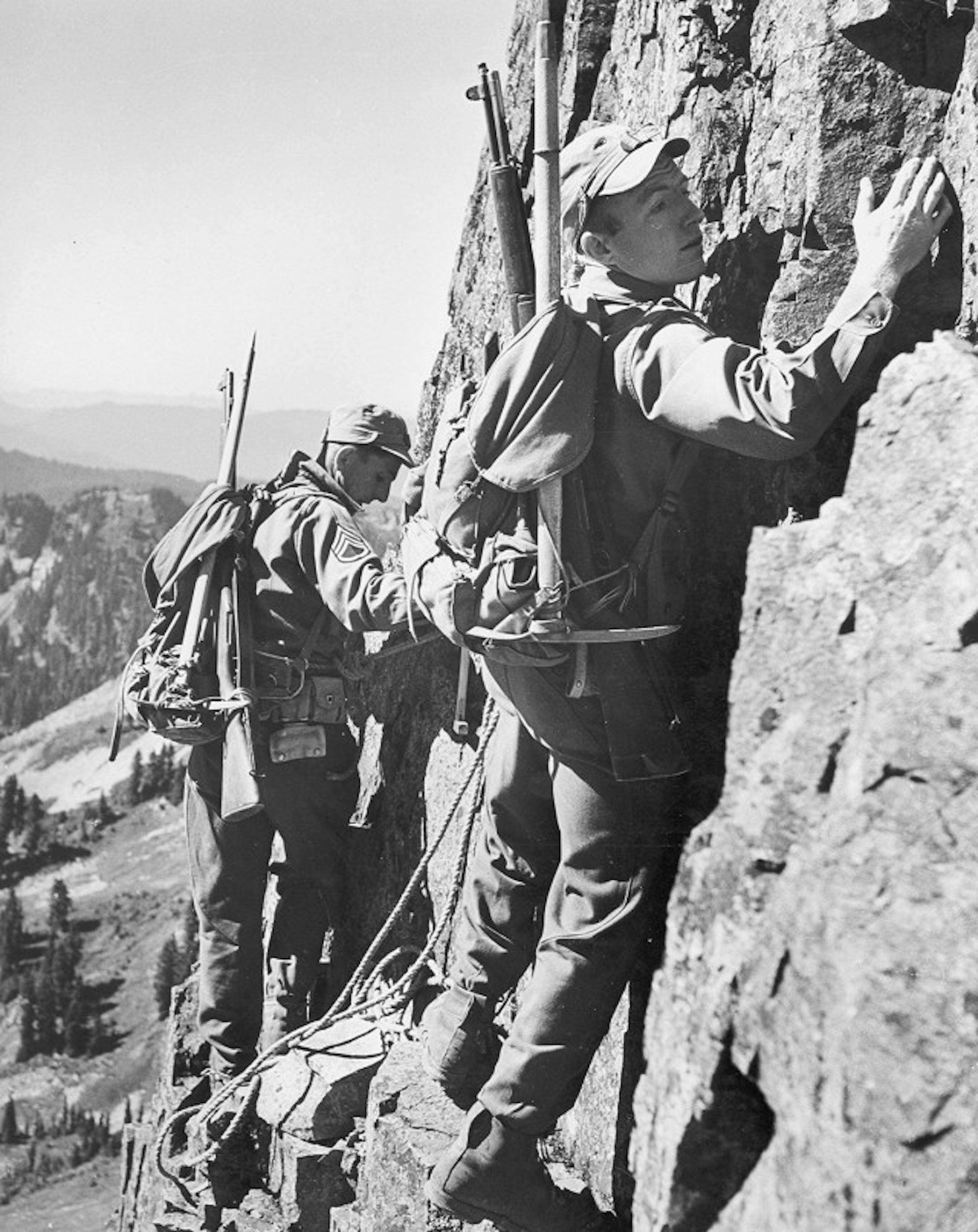
Mountaineering training is a grueling task, even in the summertime | Photo: U.S. Army
Both the 10th Mountain Division and the National Ski Patrol have gone through many iterations over the last 80-plus years. But Cox is adamant about keeping their interwoven histories in mind while planning for the future. She’s been with NSP for two years, but her passion for growth and a sustained relationship with the 10th Mountain Division is beyond evident.
NSP assisted the 10th Mountain Division in their avalanche and mountain survival training last winter for the first time in Colorado since WWII. A full circle moment, the event took place in the same peaks where the groups had first worked in the 1940s. Cox is certain that this is the beginning of a new chapter in a longstanding partnership, with training set to continue again in February 2025.
“I think it’s so important that we at NSP continue to be a conduit for young people looking for purpose, community and adventure, and for veterans looking for those same things,” she said when asked about the resurgence of this relationship. “After World War II, a lot of these [10th Mountain Division] veterans didn’t go home, they came to Colorado. They founded areas like Vail, Arapahoe Basin [Ski Area] and even the ski school program at Aspen. They found strength and community in the mountains, and we want to continue that tradition.”
It’s a vital point that often goes unrecognized. After returning from war, many soldiers found refuge in the developing Mountain West. Originally meant for war, their training and knowledge of mountain environments was repurposed and used to create ski areas and towns that are now the backbone of the North American ski industry.
To make good on this goal of continued tradition, Cox has reignited a relationship with the Army after years of dormant communication between the two groups. She visited Fort Drum, New York, which is home to two of the three brigades that make up the 10th Mountain Division. “We all agreed that the relationship is a two-way street,” she remarked when discussing her visit. “We help give our patrollers a path to military service that utilizes their current skills if that’s something they desire. But importantly, we also want to provide a place and a career for veterans to find purpose and community when they return from service.”


National Ski Patrol CEO Stephanie Cox | Photo: Courtesy of NSP
Her drive to create a path for veterans likely comes from her own experience. Cox previously spent 13 years working abroad in post-war environments specifying in international aid and supply chain development. Her work took her around the globe, from spending three years in Nepal during a brutal civil war to conducting rehabilitation efforts in Ethiopia, Zimbabwe and more. These areas were often hostile, with Cox working alongside local or governmental armies both for logistical purposes and for practical safety.
“I felt very isolated, both when I was away for work and when I would return,” she elaborated. “I couldn’t explain to my friends back home what it was like to live in those places; what it’s like to commute through a place where there are bombs hidden in the streets or to be tear-gassed on a normal weekday. Most people won’t understand, and that’s not their fault, but it can certainly create a lonely feeling. I haven’t served in the military by any means, but those experiences gave me a deep sense of empathy. It’s why I am so passionate about giving veterans a career that lets them come home to a sense of community.”
To say that ski patrolling and military service are different is an understatement. Still, there are similarities to the jobs that Cox believes veterans will value. Ski patrol requires early mornings, late nights, rigid organization and structure, immense training and passion. And at larger resorts with steep terrain and heavy snowfall, the danger can be very real. Avalanche mitigation and rescue operations can be treacherous work, and patrollers put their lives on the line day in and day out to provide an invaluable service so that all of us can ride at our favorite resorts without the major concerns that exist in the backcountry. Plus, patrollers exist in a tight-knit community, which is something that can be extremely important after military service.
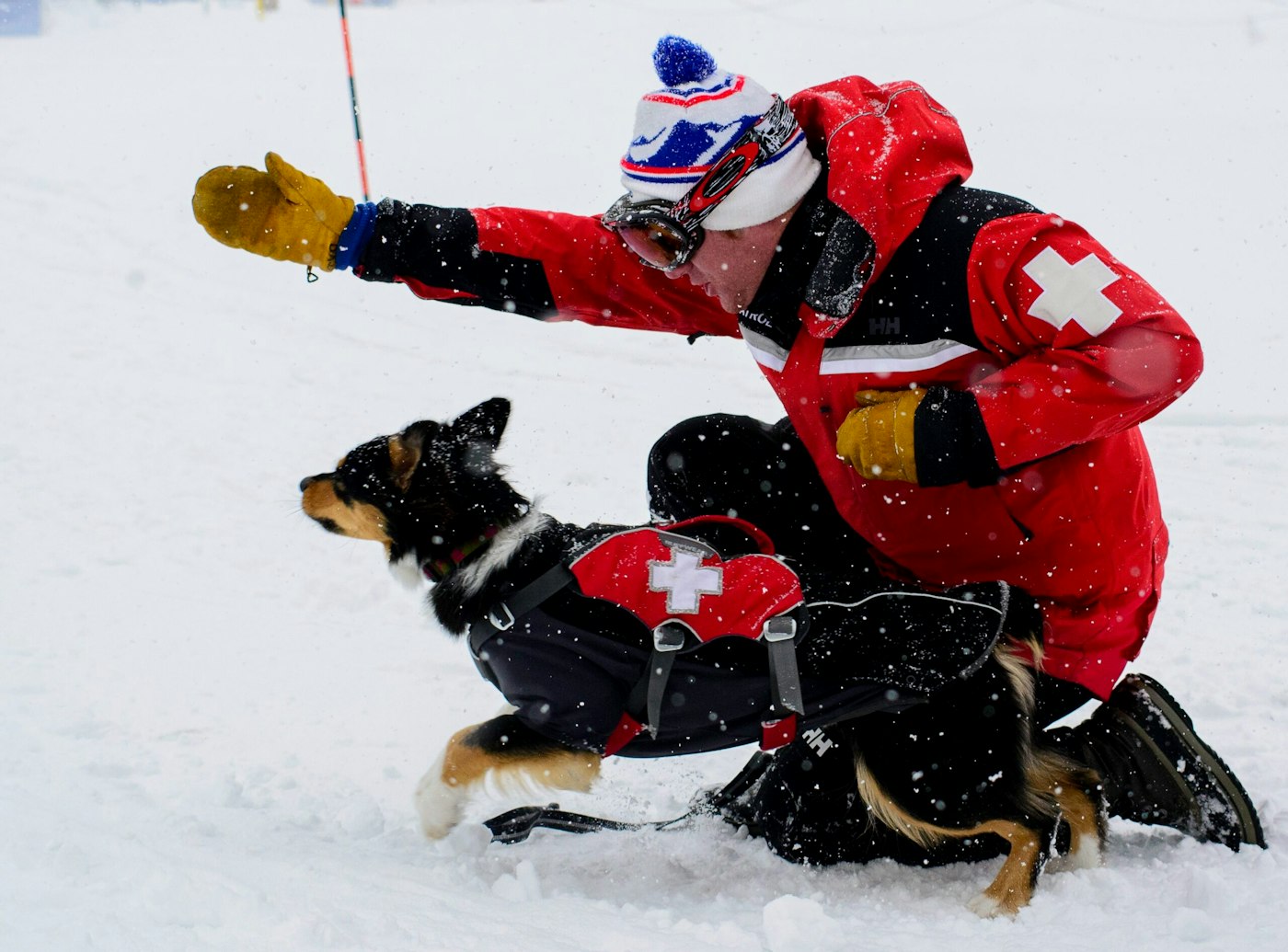
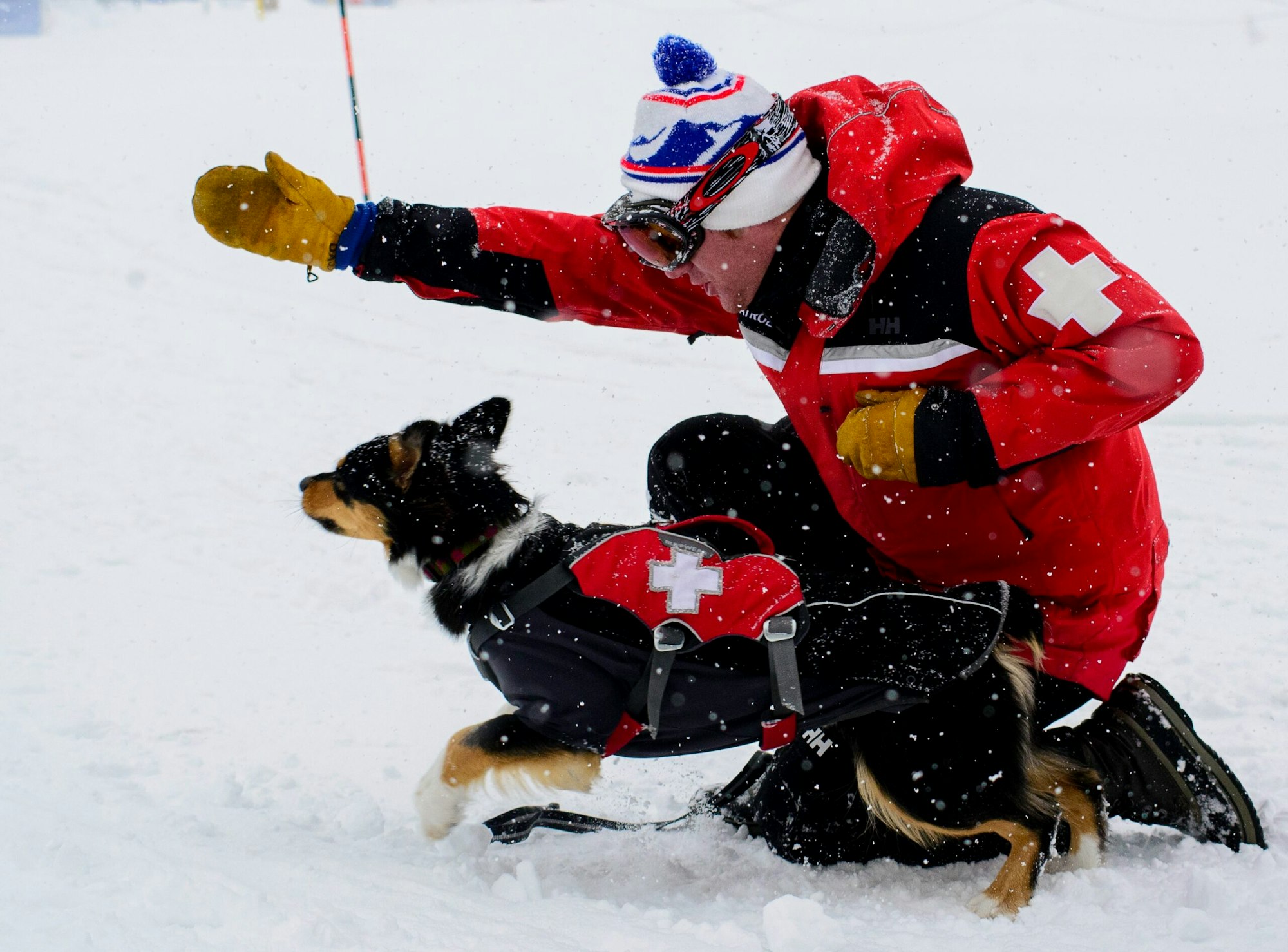
An avalanche dog in training with NSP. Dogs can be instrumental in helping to find individuals without a beacon who have been caught and buried in a slide | Photo: Courtesy of NSP
That drive for community and honor is alive and well in the 10th Mountain Division today, as we discovered when speaking with 10th Mountain Division veteran Staff sergeant Mohammad Richard Nadeem. He spent eight years in the United States Marine Corps before joining the 10th Mountain Division. He was most recently deployed with 1 BCT “Warriors” 3-6 FA HHB 2-22 Infantry FIST Anvil Company. SSG Nadeem served in Afghanistan and was with the 10th Mountain Division from October 2019 through October 2022. Today, he resides in Long Island, New York where he is studying Physical Therapy and serving as a Staff sergeant in the Army National Guard. However, he remains deeply passionate about his time with the 10th Mountain Division.
“Coming from the Marine Corps, I prided myself on a sense of tradition, a sense of belonging,” SSG Nadeem told us. “When I joined the 10th Mountain Division, I immediately found out that the tradition there is very refined, and everybody cherishes that. In [the division] we always pride ourselves on completing the hardest missions. The 10th Mountain Division was born in the mountains of World War II, and we’ve fought in many places since then, but that difficult fighting was our bread and butter.”
No military unit in U.S. history had been trained to conduct operations in mountainous terrain until the 10th was born. “Those pioneers took nothing more than a concept and turned it into reality. That’s something we don’t forget and are always inspired by today,” SSG Nadeem said proudly.
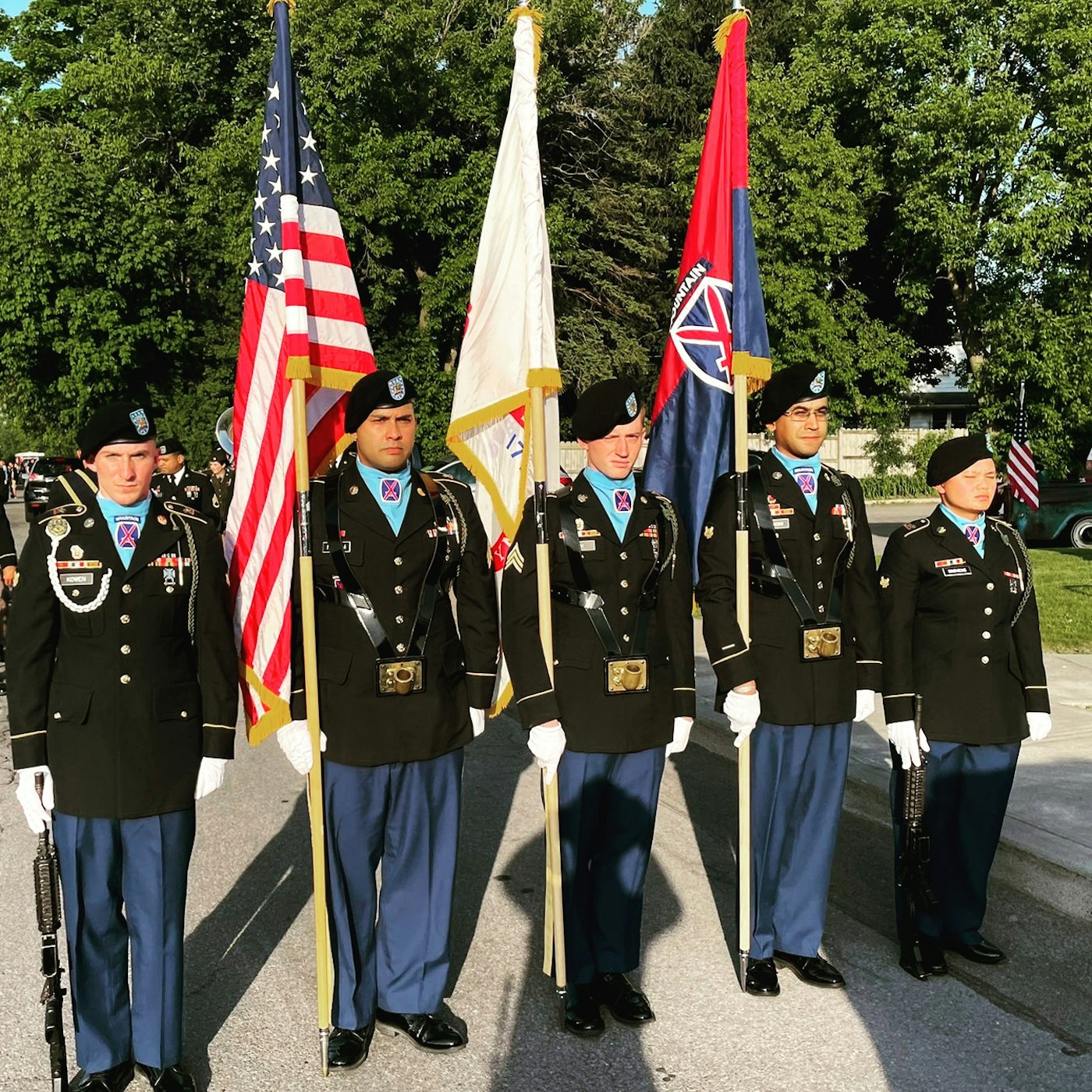
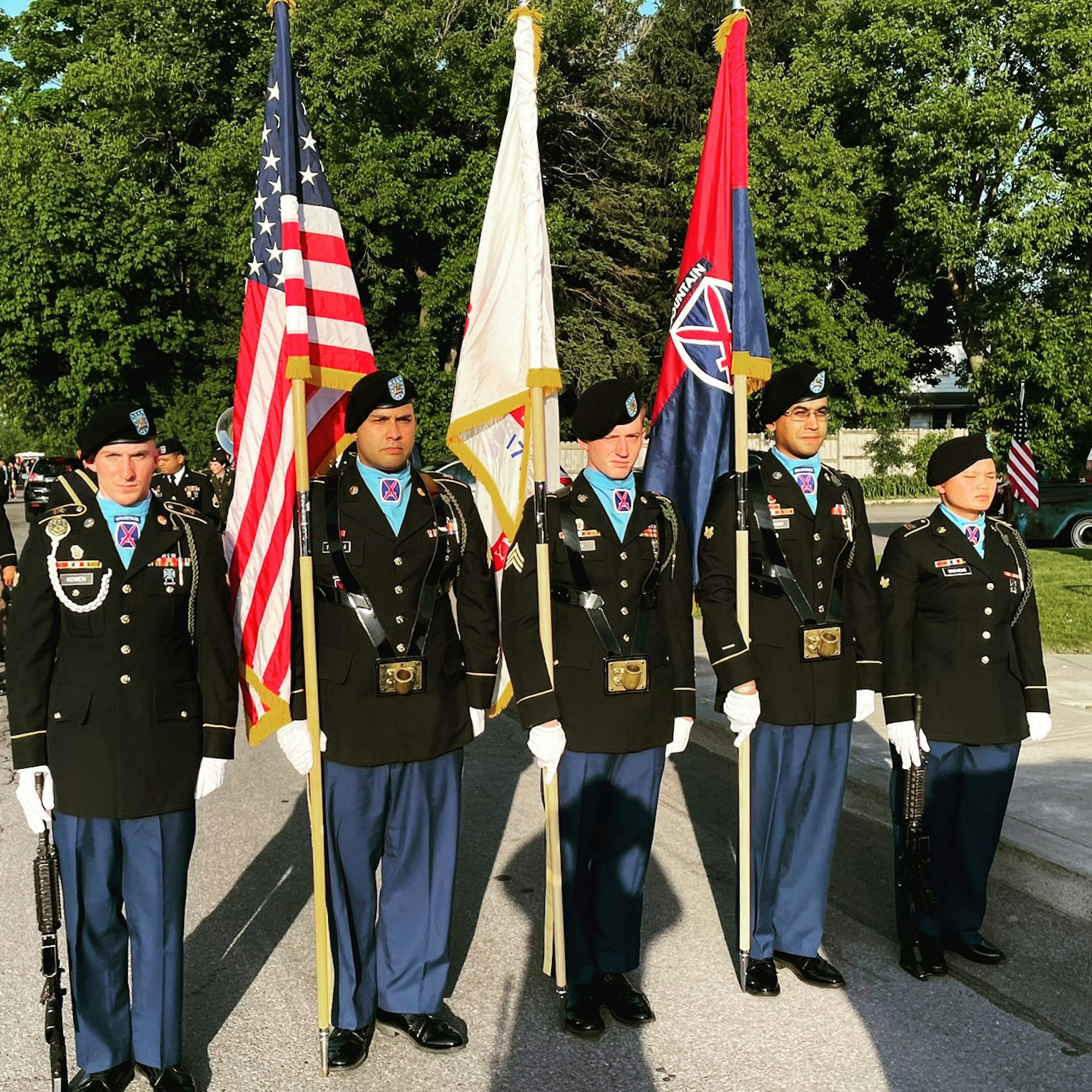
SSG Nadeem (second from left) stands with members of the 10th Mountain Division
When asked about his biggest takeaway from serving with the 10th Mountain Division, he paused in thought. After a few moments of silence, he responded, “The camaraderie. When I left the Marines, I found just as much community and devotion in the 10th. At the time that surprised me, but I cannot express how grateful I am for that group today. It helped make me who I am, and I’ll always be one of them… if [the 10th Mountain Division] needed me to go back into combat today, I would join them, without a doubt.”
Veterans Day is often a somber time, and there is no way to properly honor military service without accepting the reality that war is a grim and brutal creature. But as Stephanie Cox and SSG Nadeem echoed, there are promising ways forward. For SSG Nadeem, that path is found in education and continued service. For others, the NSP and a life in the outdoors can offer a new community and purpose. “We always have more work to do when it comes to helping others,” Cox said in closing, “but that’s the job, and we couldn’t be more excited to continue on this journey.”
The modern 10th Mountain Division was reactivated in 1985 at Fort Drum, New York. They have since been deployed in a variety of situations around the globe, from combat missions to natural disaster relief. Since 2001, they have been the most deployed division in the entirety of the U.S. Military. We endlessly thank them for their service to the United States of America.

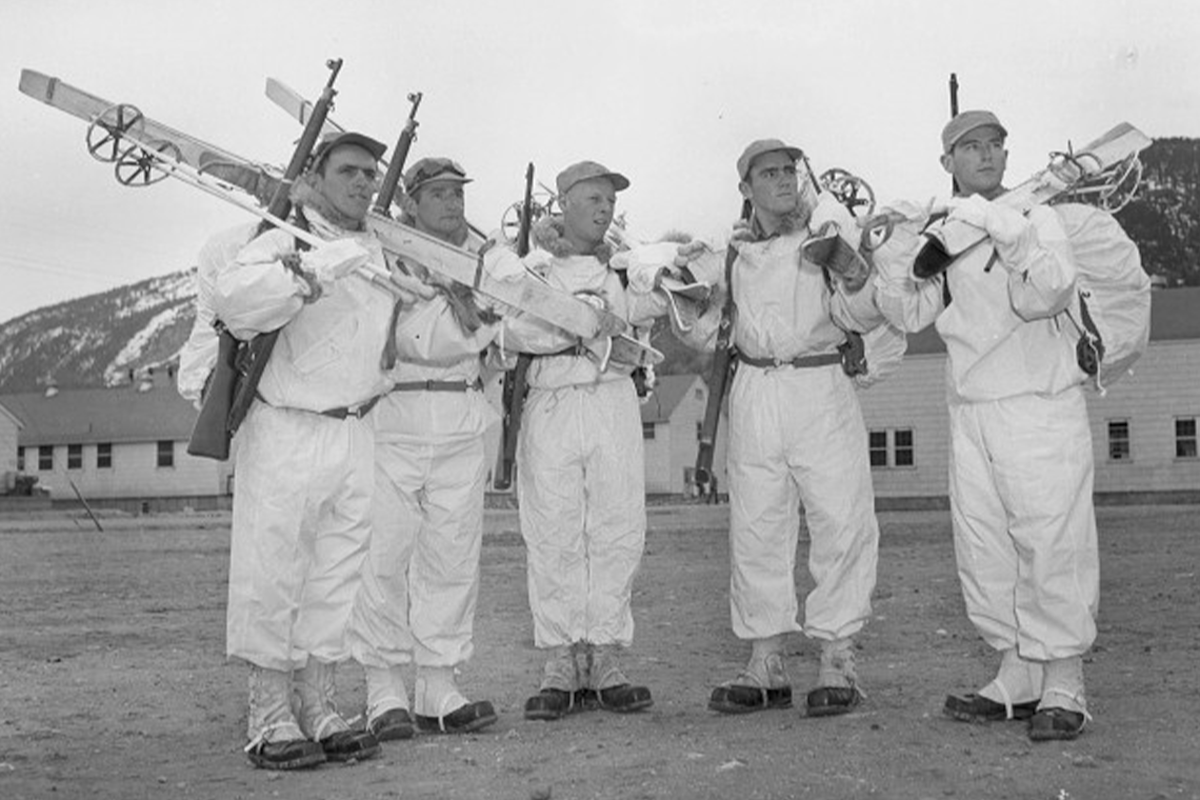
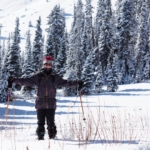

![[GIVEAWAY] Win a Head-to-Toe Ski Setup from IFSA](https://www.datocms-assets.com/163516/1765920344-ifsa.jpg?w=200&h=200&fit=crop)


![[GIVEAWAY] Win a Legendary Ski Trip with Icelantic's Road to the Rocks](https://www.datocms-assets.com/163516/1765233064-r2r26_freeskier_leaderboard1.jpg?auto=format&w=400&h=300&fit=crop&crop=faces,entropy)




![[GIVEAWAY] Win a Head-to-Toe Ski Setup from IFSA](https://www.datocms-assets.com/163516/1765920344-ifsa.jpg?auto=format&w=400&h=300&fit=crop&crop=faces,entropy)


